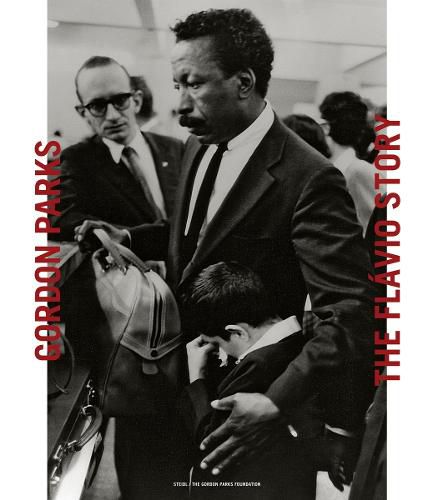Readings Newsletter
Become a Readings Member to make your shopping experience even easier.
Sign in or sign up for free!
You’re not far away from qualifying for FREE standard shipping within Australia
You’ve qualified for FREE standard shipping within Australia
The cart is loading…






This book explores a once-popular picture story by Gordon Parks and the extraordinary chain of events it prompted. Published in Life magazine in June 1961 as Poverty: Freedom’s Fearful Foe, this empathetic photo-essay profiled the da Silva family, living in a hillside favela near a wealthy enclave of Rio de Janeiro. Focused primarily on the eldest son Flavio, an industrious twelve-year-old suffering from crippling asthma, Parks’ story elicited more than 3,000 letters and $25,000 in donations from Life readers to help the family and the favela. In Brazil the story sparked controversy; one news magazine, O Cruzeiro, retaliated against Life, sending photographer Henri Ballot to document poverty in New York City. Undeterred, Life embarked on a multi-year rescue effort that involved moving Flavio to a Denver hospital, relocating the family to a new home and administering funds to support the favela. The story, as well as Parks’ relationship to Flavio, continued to develop over many years. The details of this extraordinary history provide a fascinating example of US exceptionalism during the early 1960s and a revealing look inside the power and cultural force of the Great American Magazine.
$9.00 standard shipping within Australia
FREE standard shipping within Australia for orders over $100.00
Express & International shipping calculated at checkout
This book explores a once-popular picture story by Gordon Parks and the extraordinary chain of events it prompted. Published in Life magazine in June 1961 as Poverty: Freedom’s Fearful Foe, this empathetic photo-essay profiled the da Silva family, living in a hillside favela near a wealthy enclave of Rio de Janeiro. Focused primarily on the eldest son Flavio, an industrious twelve-year-old suffering from crippling asthma, Parks’ story elicited more than 3,000 letters and $25,000 in donations from Life readers to help the family and the favela. In Brazil the story sparked controversy; one news magazine, O Cruzeiro, retaliated against Life, sending photographer Henri Ballot to document poverty in New York City. Undeterred, Life embarked on a multi-year rescue effort that involved moving Flavio to a Denver hospital, relocating the family to a new home and administering funds to support the favela. The story, as well as Parks’ relationship to Flavio, continued to develop over many years. The details of this extraordinary history provide a fascinating example of US exceptionalism during the early 1960s and a revealing look inside the power and cultural force of the Great American Magazine.